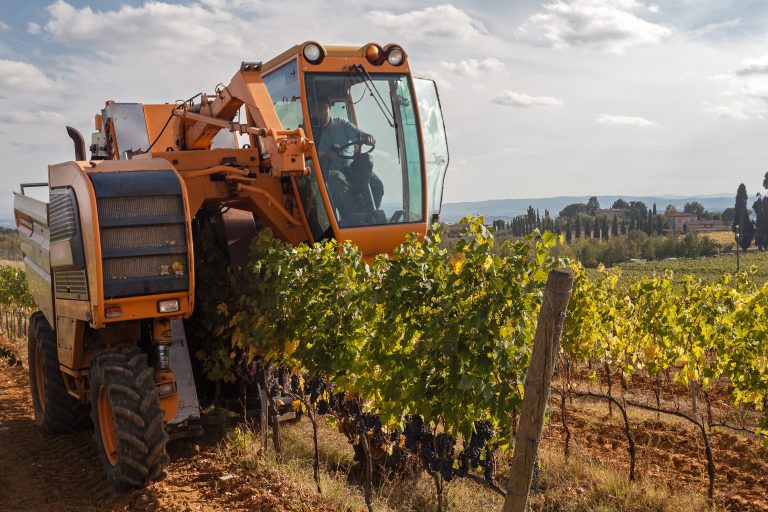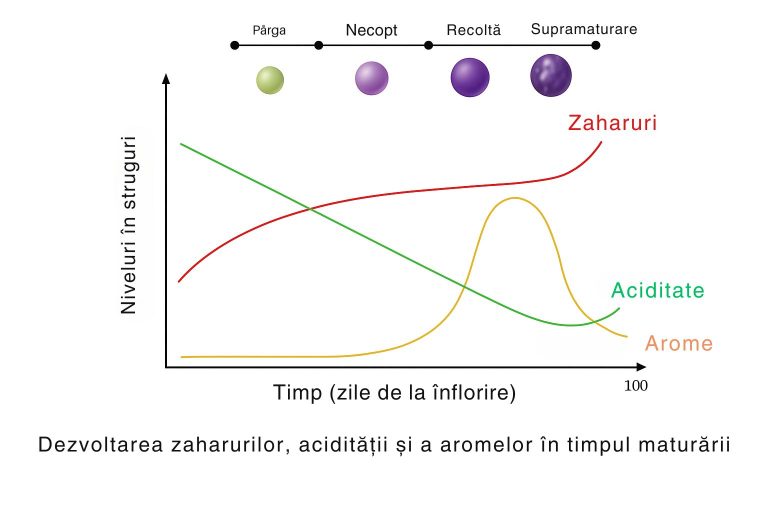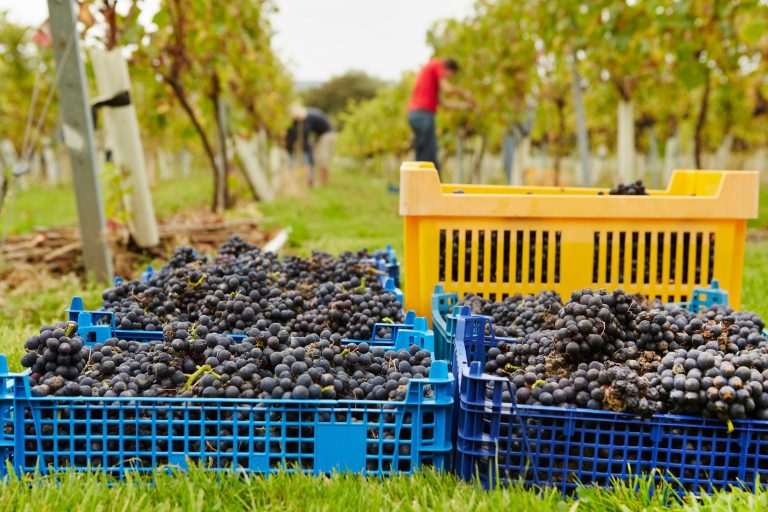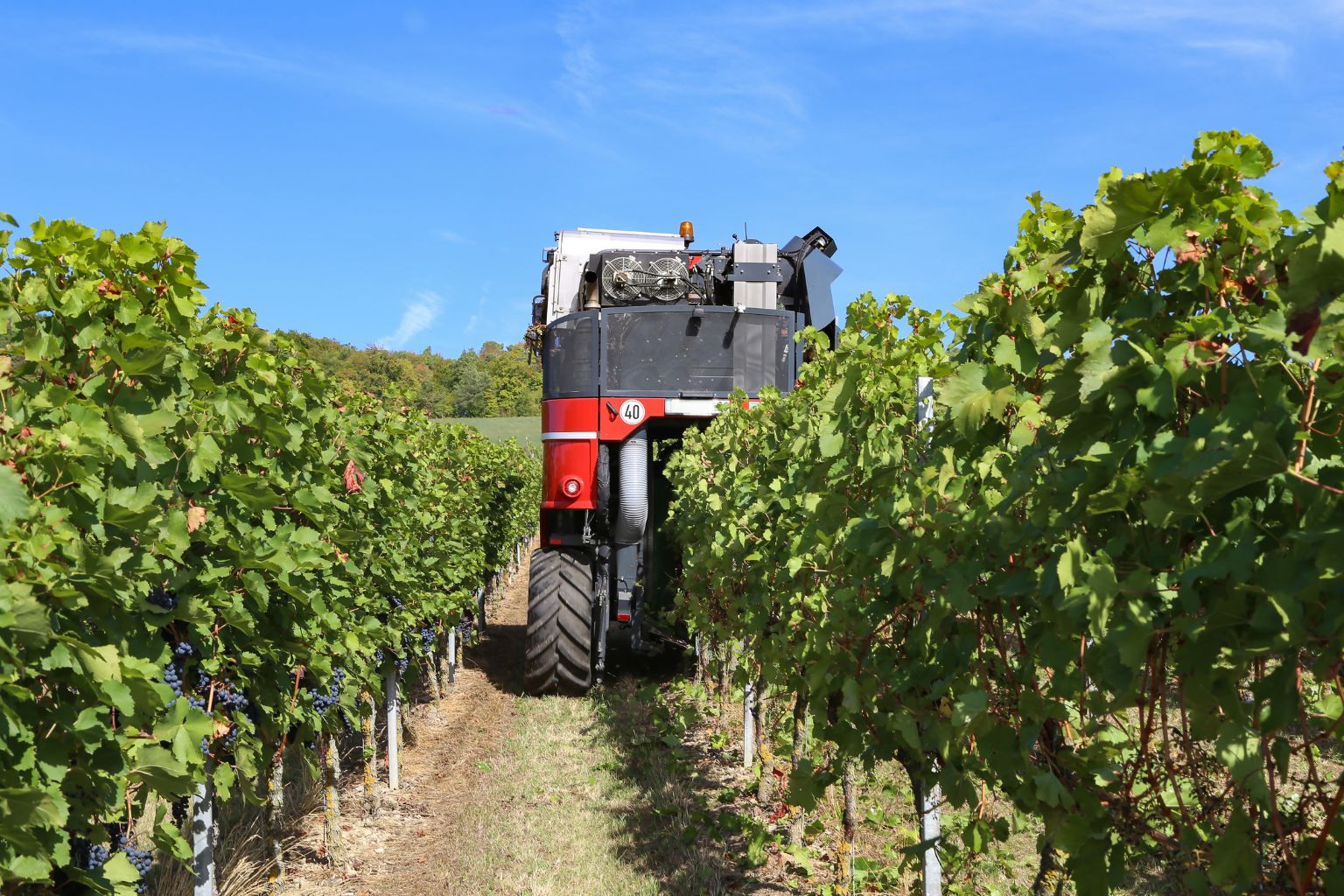Harvest time has long lived in the collective imagination as a countryside festival – lively, sprinkled with fresh grape juice, with pastrami sizzling on the grill, punctuated by folk dances and cheerful songs. And indeed, for centuries it was exactly that. But climate change, technological innovations, new discoveries, and a tangle of bureaucracy have turned harvest days into something quite different.
These days it’s nearly impossible for any grower, oenologist, or winery owner to pick up the phone, but we managed to steal a few minutes with Nicu Mateescu, oenologist at Domeniul Bogdan, for a ground-level look at how a harvest really comes together.
The Long Road to the First Grape
For the team inside the winery, harvest begins long before the first grape is picked. One of the most critical resources to secure is labor for manual harvesting. “This year, we brought in 23 workers from Botoșani. We would have needed around 40, but it’s getting harder and harder to find people willing to do this kind of work,” says Mateescu.
Each worker needs disinfected shears, gloves, and crates. And crates themselves come with their own logistics: they must be washed after every use and left to dry in the sun. “If you use the same crate several times, inevitably, a drop of juice gets left behind. It oxidizes, and that affects the quality of the next batch. I can end up with a must showing volatile acidity,” Mateescu explains – referring to the wine fault that reveals itself in vinegar-like aromas.
For mechanized harvesting, a full inspection of the machinery is essential to guarantee smooth running throughout the season. Then come the trailers: they need protective covers, because the tarps don’t just shield the grapes from the sun, but also from dust, insects, and stray debris picked up along the way from vineyard to cellar.

Paperwork First, Winemaking Second
By law, every glass of wine must be fully traceable to its source. And older regulations, which account for every last milliliter of alcohol, require that anything capable of producing alcohol be officially recorded.
In the cellar, that translates into ledgers filled with details: every trailer that arrives, the exact weight of grapes unloaded, where the must was directed, and how much wine it eventually produced.
Even before harvest begins, the cellar master must have everything lined up for vinification – from yeasts and enzymes to the full suite of substances needed (or optional) during the process.
“At our estate, being biodynamic and producing wines from organic through to fully certified bio, things are a little simpler – we don’t use additives. But in other places it’s more complicated. Take the mandatory summer weeding, for example: we bring in workers from Târgu Mureș because, since we don’t use systemic chemicals in the vineyard, every vine has to be weeded by hand. It’s the only way to keep the vineyard aerated and prevent disease,” Mateescu says.
On the Ripeness of Grapes
Deciding the right moment to harvest is becoming more and more difficult with each passing year. First, a quick breakdown:
– Sugars: Grapes accumulate sugars from the moment they form until they are picked. Heat accelerates this process, and dehydration (caused by drought or extreme heat) concentrates the juice, making it sweeter.
– Acidity: Very young or unripe grapes are highly acidic. This acidity decreases over time, but if it drops too low, the resulting wine becomes flat and lifeless.
– Aromas: These mature gradually, reaching their peak – known as phenolic maturity – right around harvest. After that, they begin to transform, often into jammy or even unpleasant flavors.

The Ideal Harvest: Perfect Sugar Meets Peak Aroma
With sugars, the equation is simple: about 16.7 grams of sugar ferment into 1% alcohol by volume. Based on this, the grower or cellar master decides when to pick, aiming for the sweet spot of 11–13.5% alcohol in the finished wine.
For a long time, phenolic maturity (aromas) and optimal sugar accumulation occurred simultaneously. But in recent years, grapes have been reaching their sugar targets much earlier than their aromatic potential, and the gap has kept widening – now as much as two weeks.
The result? Alcohol levels in wines have steadily climbed, often landing between 13% and 16%. More sugar means more alcohol. At the same time, the lack of aromatic maturity produces simpler, less expressive wines, with little aging potential. Winemakers are forced into a difficult choice: bold, high-alcohol wines with great aromas, or lighter, more approachable wines that may lack character.

A Harvest Calendar
It’s worth remembering that every grape variety and every vineyard parcel has its own rhythm. Pinot Noir in Oltenia is not picked at the same time as Pinot Noir in Satu Mare. Even within a single estate, grapes from the same variety may be harvested at different times depending on whether they’re destined for entry-level wines, premium labels, or super-premium cuvées.
Cooler regions start and finish harvest later than warmer ones. In years of drought, growers might be forced to pick earlier – before aromas fully develop – to avoid losing the crop entirely due to plummeting acidity. It’s better to have a harvest, even without top wines, than none at all.
Still, there’s a clear order:
– First come the grapes for sparkling wines, where high acidity is key: Chardonnay, Pinot Noir, but also local varieties like Zghihară, Busuioacă, Frâncușă, Fetească albă, or Fetească regală.
– Next are the early-ripening varieties: Chardonnay, Pinot Noir, Sauvignon Blanc, Pinot Gris/Grigio, Gewürztraminer, Rhein Riesling, and so on,
– Then the medium to late-ripening grapes: Viognier, Merlot, Cabernet Franc, Syrah, Fetească neagră, Negru de Drăgășani, Fetească regală.
– At the end of harvest come the late ripening varieties: Cabernet Sauvignon, Zinfandel, Touriga Nacional, Grenache, and the grapes destined for semi-sweet and sweet wines.
– And finally, some vines are left for “ice wines,” harvested only after the first frost.

Harvest at Domeniul Bogdan
“At our estate, the first grapes we harvested were Sauvignon Blanc, destined for the Primordial range. We had heavy losses here, due to the frost waves at the beginning and end of March. With fewer grapes, they ripened earlier, and we picked them between August 26–28. Next came Pinot Noir for rosé, finished on September 4, and on the 5th we began picking Merlot, also for rosé. The last to come in will be Fetească neagră and Merlot for reds, along with Cabernet Sauvignon and Riesling, which we’ll blend with Muscat Ottonel,” says Nicu Mateescu.
But the challenges don’t end once the grapes are in. Even grape pomace (the skins, seeds, and pulp left after pressing) is tightly controlled – no chance of a villager distilling a homemade brandy from it. At Domeniul Bogdan, as at Domeniile Averești and other wineries, pomace is returned to the vineyard as natural fertilizer. The stems, however, must be disposed of according to municipal regulations. But those are stories for another time…








